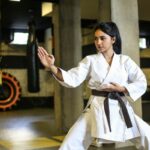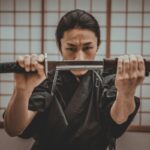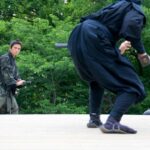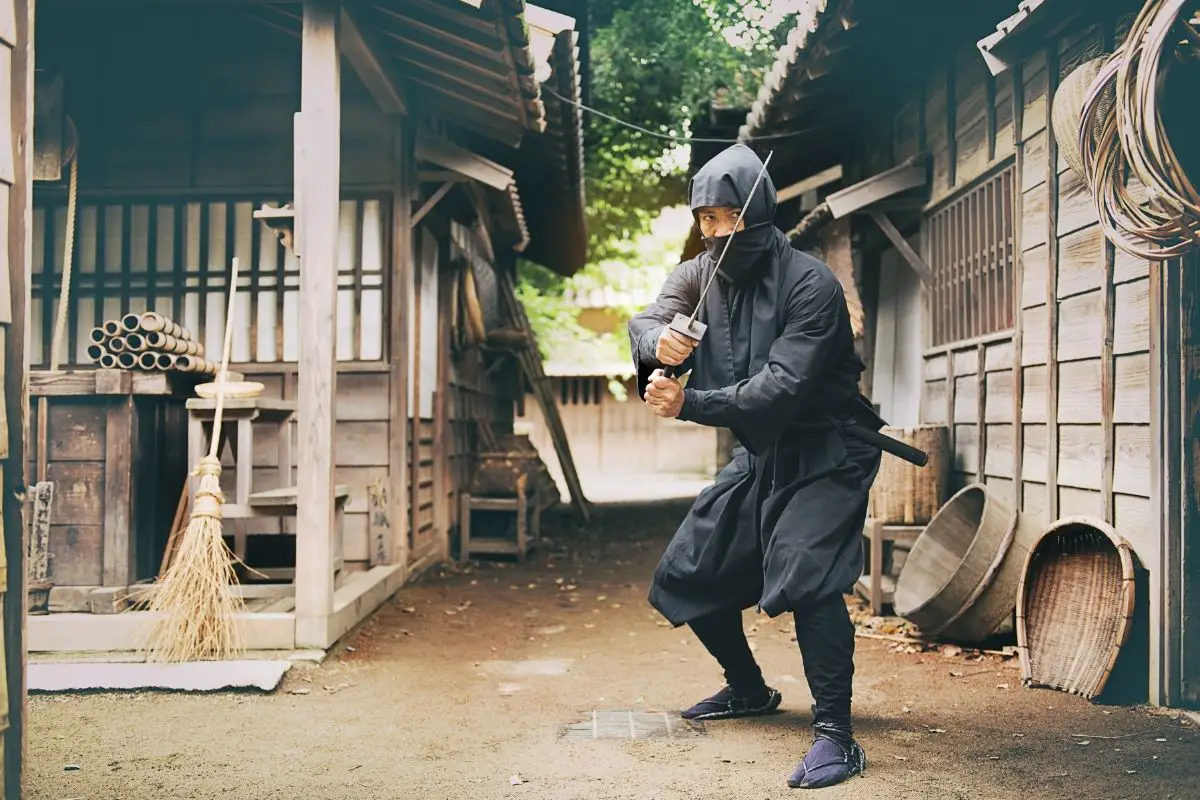We all pretty much know what a Ninja is. From watching TMNT and Asian movies to playing video games and watching anime – any Naruto fans here? – we all know about these mystery warriors who moved faster than a shadow.
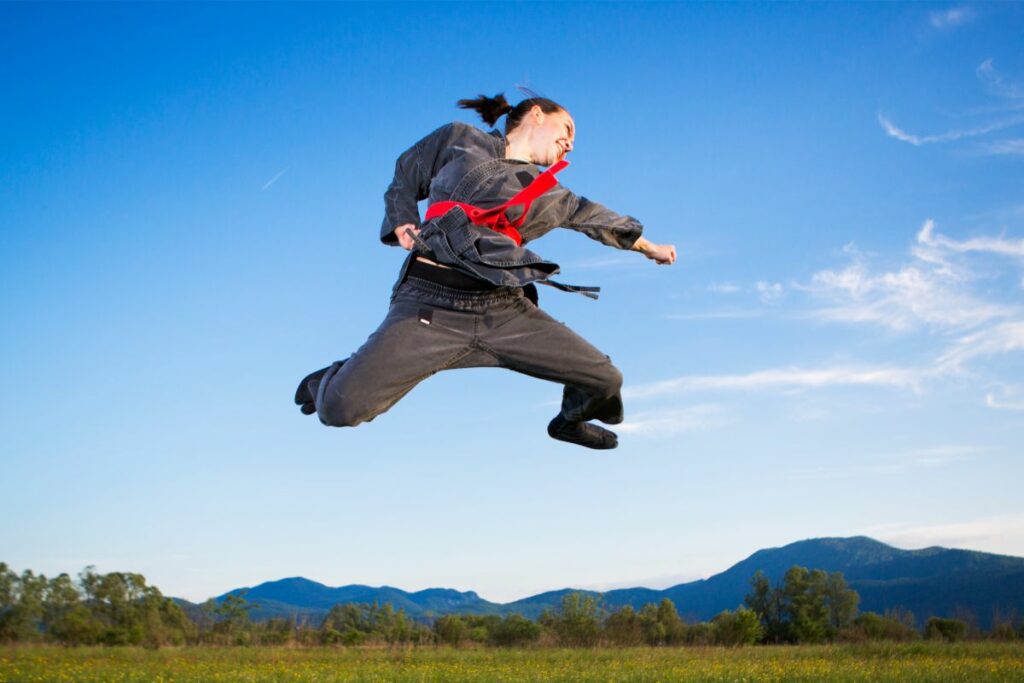
What we might not know is that these mysterious people were trained in the art of Ninjutsu, which translates as “The Art of Patience”. But, what exactly is Ninjutsu and how can it be used today? Is it simply a martial art like karate, or is it something more than that?
Keep on reading this article to find out the origins of Ninjutsu, the people who used it, and whether you can become a Ninjutsu student today!
What Is Ninjutsu?
Ninjutsu is a Japanese martial art, freely translated as “the art of patience”, which cultivates the ascetic traditions of Ninpo, through nine different Ryu (schools, families), with Hatsumi Masaaki (Bujinkan Soke) continuing the tradition.
Simply put, Ninjutsu is a very old martial art that appeared more than 1000 years ago in the medieval period of feudal Japan. It is said to be based on the martial arts teachings of ninjas and samurai.
What Is The Difference between A Samurai And A Shinobi Warrior?
Something that needs to be clarified before we continue with its story, is the difference between Ninja and Samurai. The Samurai (侍) came from the “aristocracy” of Japan.
They wore expensive kimonos, and their war uniform was large, impressive, and with many symbols. They were bodyguards of the rich and soldiers and belonged to many gangs.
On the contrary, the Ninja, or more properly Shinobi (忍者) as a ninja is a Westernized terminology, were people of the people.
Although there were exceptions, most of them came from the lower classes and their uniforms were dark and simple so that they could not be easily identified.
However, both Samurai and Shinobis trained in Ninjutsu, and it was also not uncommon for samurai to become Shinobis and vice versa.
How Did Ninjutsu Come To Be?
As the art of the Shinobi and the Samurai, it is one of the oldest martial arts in history.
Due to the fact that it was a secret art, we do not know its roots. The secrets of art were transmitted by word of mouth and so there is no written evidence, at least for the first years of its existence.
The Shinobis were generally martial artists and were used by superiors to perform acts forbidden to the Samurai (see also ‘Are There Still Samurai?‘). What is certain is that Ninjutsu was used by ordinary people to protect themselves in times of war or unrest in the feudal period.
It is an art that arose out of necessity due to the difficult conditions.
We could perhaps split Ninjutsu into two periods. One is the pre-Meiji period, and the other is the post-Meiji period. In pre-Meiji times there was war, so Ninjutsu was a way of self-defense and protection, as well as a fighting method.
After the Meiji era, when the war ended, Ninjutsu was transferred to dojo (places of education and meditation) and passed down as art from generation to generation.
At What Age Could One Learn The Ninjutsu Art?
To be able to learn Ninjutsu, one had to start at a very young age, around 5-6 years old.
The training was rigorous and consisted of a huge range of skills: espionage, unarmed and armed combat, disguise, manufacturing medicine, poisons and explosives, meteorology, archery, horseback riding, and much more.
Throughout the years of Ninjutsu’s history, many genres/styles have been developed under its name, which when combined, created today’s art.
One of the most important teachers in the Ninjutsu history is Takamatsu Toshitsugu, also known by the nickname Moko no Tora (蒙古 の 虎), which means “Mongol Tiger”.
He was one of the last active Shinobis and, after enriching the art, he taught it to his Soke (which means successor) Hatsumi Masaaki who eventually united the 9 schools/styles of Ninjutsu and created the Bujinkan Budo Academy (武神館) to which Ninjutsu also belongs.
But, even today, the learning material of the Academy and Ninjutsu, in particular, seems endless, so it takes a lifetime to learn it without anyone guaranteeing that you will completely master it!
What Can One Learn Today With Ninjutsu?
Those who are involved in art today or want to get involved, are not just learning techniques. They are essentially trained in all that the previous Sinobis learned, namely disguise, chiropractic, philosophy, etc., which do not seem to be related to martial arts.
But Ninjutsu is not a sport like karate, and by that, I mean no one learns it to win medals and belts.
It is a tradition passed down from teachers to students, and through its techniques and strokes, you learn how to behave in a bunch of strange situations.
More than just another martial art, it is a way of life and guidance to positively deal with the situations around us. If one follows proper training one can learn to tame, analyze, and better handle every emotion and situation, recognize their good and bad sides, and accept them.
However, when it comes to practical skills, there are 18 major categories that were first declared on the Togakure-ryū papyrus and became final for all ninjutsu schools. The 18 skills are:
- Bajutsu – horse racing
- Bōjutsu – stick and pole techniques
- Bōryaku – tactic
- Chi-mon – geography
- Chōhō – espionage
- Hensōjutsu – disguise and impersonation
- Intonjutsu – escape and hide
- Kayakujutsu – pyrotechnics (gunpowder, explosives)
- Kenjutsu – sword techniques
- Kusarigamajutsu – kusarigama – chain – scythe techniques
- Naginatajutsu – naginata – techniques with naginata
- Seishinteki kyōyō – the spiritual perfection
- Shinobi-iri – secrecy, and penetration
- Shurikenjutsu – weapons throwing techniques (see more about Japanese weaponry here)
- Sōjutsu – spear techniques
- Sui-ren – water training
- Taijutsu – unarmed battle
- Tenmon – meteorology
As you might have already figured out, it is hard to find an academy in today’s world that will teach you all of these skills.
Especially when it comes to learning how to make gunpowder, it is highly unlikely you will learn the tricks from a Ninjutsu master but learning the Ninjutsu tactics and stick and pole techniques will definitely be on the list.
The Bottom Line
Some Ninjutsu methods have become obsolete in recent years. Making gunpowder and explosives, for example, isn’t suited for today’s circumstances.
However, mastering other skills like fighting techniques and building a new, stronger mindset with Ninjutsu is something you should try!

